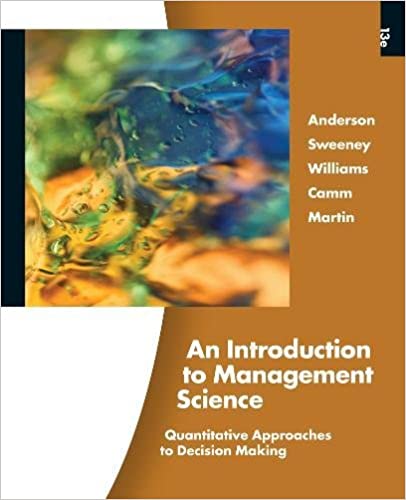
An Introduction to Management Science 13th Edition by David Anderson,Dennis Sweeney ,Thomas Williams ,Jeffrey Camm, Kipp Martin
Edition 13ISBN: 978-1439043271
An Introduction to Management Science 13th Edition by David Anderson,Dennis Sweeney ,Thomas Williams ,Jeffrey Camm, Kipp Martin
Edition 13ISBN: 978-1439043271 Exercise 6
Data collected from selected major metropolitan areas in the eastern United States show that 2% of individuals living within the city limits move to the suburbs during a one-year period, while 1% of individuals living in the suburbs move to the city during a one-year period. Answer die following questions assuming that this process is modeled by a Markov process with two states; city and suburbs.
a. Prepare the matrix of transition probabilities.
b. Compute the steady-state probabilities.
c. In a particular metropolitan area, 40% of the population lives in the city, and 60% of the population lives in the suburbs. What population changes do your steady-state probabilities project for this metropolitan area?
a. Prepare the matrix of transition probabilities.
b. Compute the steady-state probabilities.
c. In a particular metropolitan area, 40% of the population lives in the city, and 60% of the population lives in the suburbs. What population changes do your steady-state probabilities project for this metropolitan area?
Explanation
Markov Process:
Markov process models a...
An Introduction to Management Science 13th Edition by David Anderson,Dennis Sweeney ,Thomas Williams ,Jeffrey Camm, Kipp Martin
Why don’t you like this exercise?
Other Minimum 8 character and maximum 255 character
Character 255


